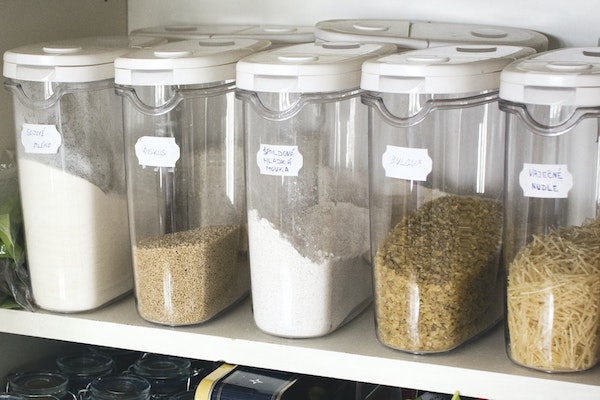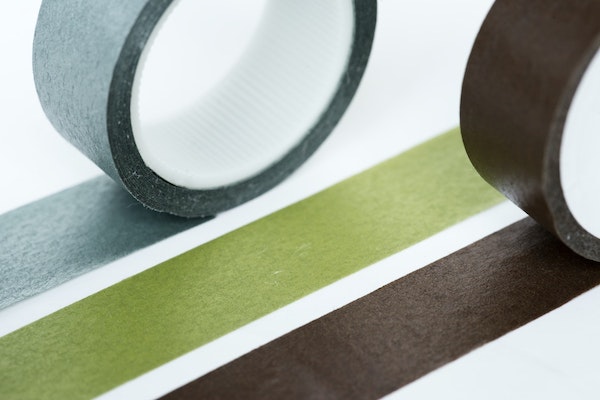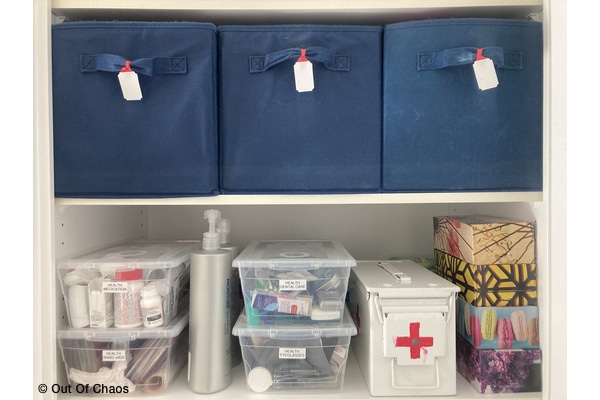
Some people live in labelling limbo. They are reluctant to use labels because they are waiting for the perfect solution. There is no such thing as “the perfect solution,” but there are many “good enough” solutions. This in-depth look at labels will help you decide which labels to choose for your organizing project.
Removable Labels
Removable labels allow you to identify items temporarily. Use large labels and bigger font on larger containers, or add a picture, so it is easy to read from across the room. Removable labels are great for containers you use for different purposes. For example, when decluttering, label a bin for collecting certain items. As each bin empties, remove the label and use it for another purpose. These dissolvable labels are perfect for canning jars or potluck suppers. Once the container is empty, simply wash away the tag with water.
Erasable Labels
Use erasable labels to create reusable file folders to circulate paperwork around the office easily. Chalkboard labels (erasable and removable) are great for craft rooms, kitchens and toy storage. Add a pop of colour with chalk markers.
Permanent, Durable Labels
Permanent labels that stand up to repeated use in outdoor conditions are ideal for labelling recycling and compost bins, garden tools, buckets, ladders, and power tools. Avery UltraDuty™ GHS Chemical labels stand up to tearing and scuffing for even more durability. They are sun, water, and chemical resistant – perfect for items that require repeated cleaning and sanitizing. They come in various sizes, from full page to address label size (5cm).
Coloured Labels

Coloured labels get our attention. They make it easy to differentiate items. At Out of Chaos, we use brightly coloured labels on every move management project. It helps us quickly see which boxes go in which rooms. We often use removable colour-coding labels when we’re doing estate clearing. We assign a different colour to each category (keep, sell, donate).
Coloured washi tape is another way to label items. Assign each family member a different colour of washi tape. Wrap it around keys, pens, pencils, charging cables, and power adaptors, and it will be easy to sort out what belongs to whom.
Hanging Labels

Options for hanging labels include:
Safety tip: Hanging labels look lovely, but they could be detached, chewed on, or swallowed. Please keep them out of reach of small children and pets.
Fabric Labels
Write your name (or initials) on these permanent, no-sew fabric labels with a marker and stick them onto your gloves, socks, face masks, or any other clothing you are not able to iron. They are also great for pet collars and leashes.
Written Labels
Sometimes writing a label directly on the object is sufficient and efficient. There is no point in making a beautifully crafted label for a box destined for the recycle bin. I recommend multi-colour Sharpie markers. They write on just about everything in quick-drying, permanent ink. Silver ink Sharpies are perfect for writing on black plastic (e.g. AC power adapters).
Another option for writing labels is a china marker (also known as a wax pencil). You don’t have to worry about a wax pencil drying out like ink markers. There is no sharpener needed. You simply unwind the paper covering to expose the tip. The marks are permanent on paper, cardboard and some plastics but temporary (wipe off) on china, crystal, glass, and metal.
We hope that this in-depth look at labels will spark your imagination so you can avoid labelling limbo. If you need some inspiration, contact Out of Chaos through our website.
Image by Jakub Kapusnak at rawpixel.
